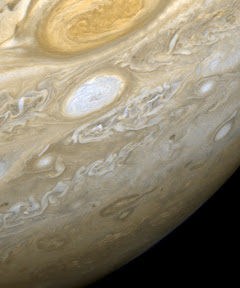In 1981 I completed a high school science project on the Solar System. This simple exercise kicked off a lifelong fascination with planets, their moons, and other minor celestial bodies in our solar neighbourhood. At the time, I ran late completing my project. When questioned by the teacher, I explained that I was enjoying the task so much that I didn’t want to rush it. She agreed to let me take my time. I eventually turned in a handwritten book with dozens of pages containing detailed descriptions and data tables. It was illustrated throughout with images a local bookstore kindly let me photocopy from its pricy hardcopy coffee table books.
I couldn’t have timed my passion for the solar system better. The eighties were a golden age of discovery for planetary science. In 1979, two Voyager probes flew by Jupiter. They both carried on to Saturn, reaching it in 1980 and 1981. Voyager 2 then continued on to fly by Uranus in 1986 and Neptune in 1989.
Various probes flew past Halley’s Comet in 1986 while others orbited and landed on asteroids in the following decades. In 1997, the first of multiple Mars rovers landed on the red planet streaming back some of the most stunning images ever taken from the surface of another world.
By the turn of the millennium, Pluto remained the only unexplored planet. Last month, this tiny, pixelated dot in the sky was finally explored. The New Horizons probe flew past the minor planet and its five quirky moons on 15 July. Launched in January 2006, this hardy machine has spent ten years flying more than 4.83 billion km to reach this far-flung destination. In the image above you can the best photo of Pluto that existed before the fly-by next to one taken by New Horizons last month.
After a nerve-wracking journey, New Horizons skimmed over Pluto’s surface at a height of 12,472km. Traveling at a speed of more than 13km per second, it completed 236 separate scientific observations of all six bodies in the Pluto system using all seven of its instruments. It’s incredible to think that the entire encounter lasted less than 30 hours. I cannot imagine spending ten years of my career focused on a single event that lasted barely a day.
The first images beamed back from the edge of our solar system are truly spectacular. Pluto has surprised and delighted everyone. This is a dramatic icy world, filled with vast frozen nitrogen ice plains, dramatic towering ice mountains, oozing glaciers, and dark stained craters. Its largest moon, Charon, has proven equally spectacular. The moon's surface is hewn by deep and dramatic rifts, a red-tinged polar cap, and plenty of photogenic craters.
With a diameter of 1,214km, Charon is almost the same size as Pluto (1,400km). As a result, these two bodies are often referred to as a binary dwarf planet system. Not only that, their gravitational attraction is such that they actually orbit around a point in space midway between them. When viewed from above, these two objects appear to spiral along Pluto's orbital plane rather than move in a smooth arc.
With so many extraordinary observations, it seems that the solar system has saved the best for last. As I remarked to my mother last week, she’s been lucky enough to witness in her lifetime the exploration of every major body in the solar system. We’ll never live through such a golden age of exploration again.
NOTE
The image above was added in 2023. I took the photo above of a New Horizons replica during a visit to the Smithsonian Air & Space Museum in 2017. Ditto for the replica of the Voyager probe. I've also updated a few links and added a spectacular oblique image of Pluto's ice mountains released in September 2015.











No comments:
Post a Comment